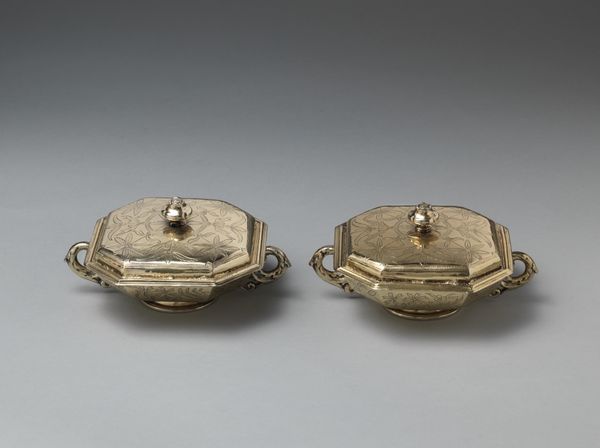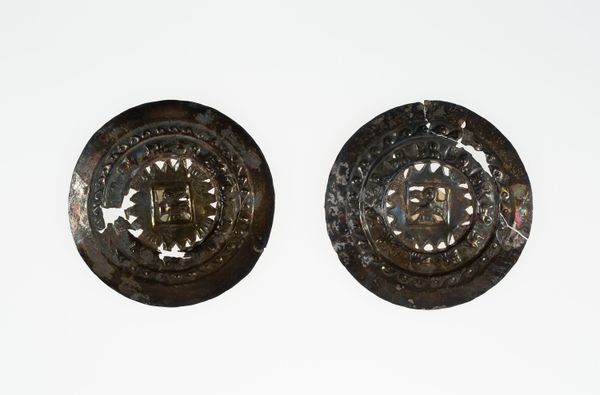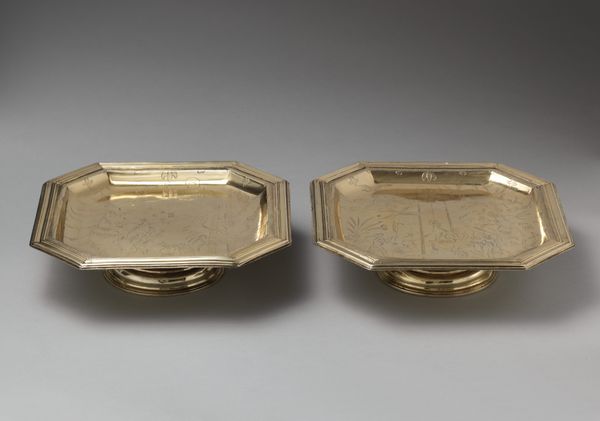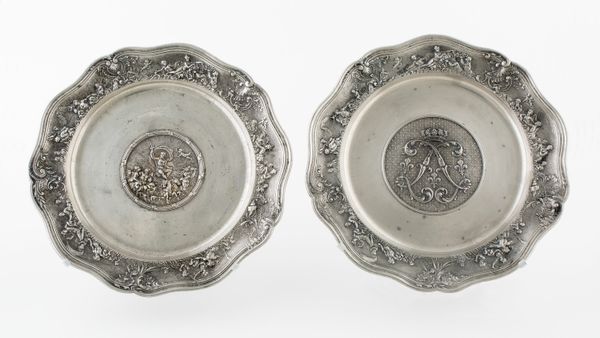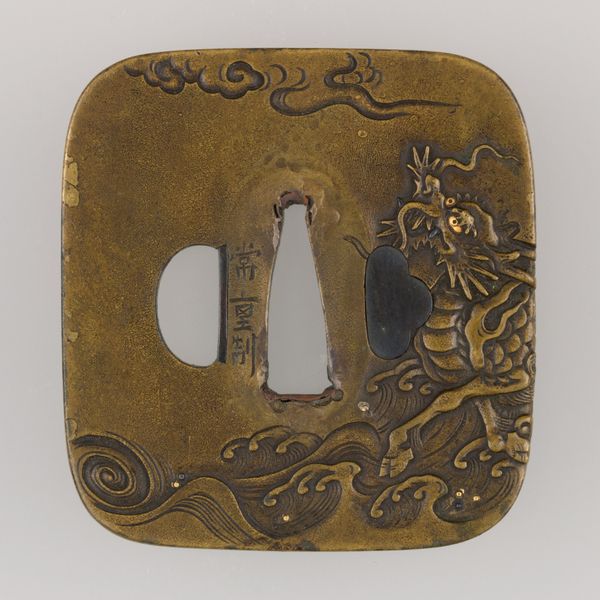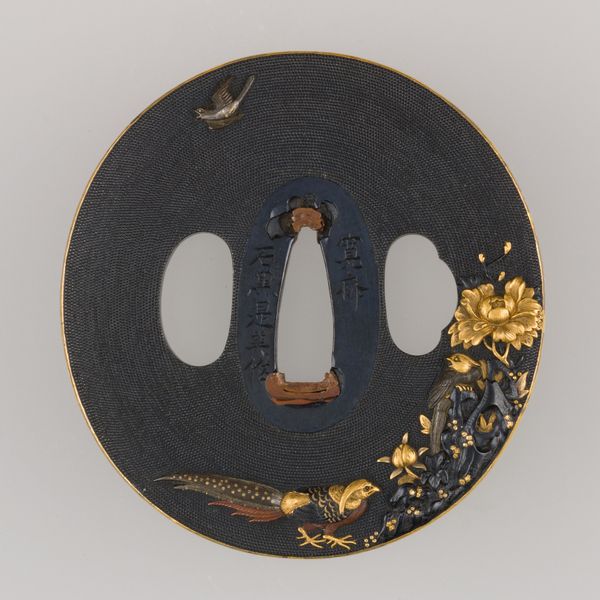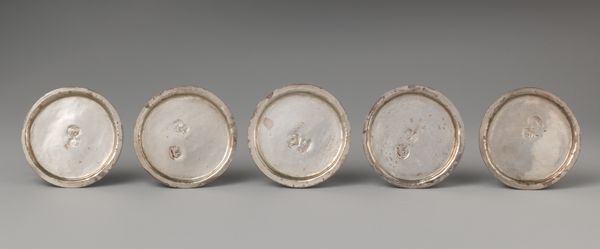
ornament, metal, sculpture
#
ornament
#
baroque
#
metal
#
sculpture
#
sculpture
#
costume
#
decorative-art
Dimensions: 8.9 × 6.2 cm (3 1/2 × 2 7/16 in.)
Copyright: Public Domain
Editor: Here we have a pair of shoe buckles from the late 18th to early 19th century, crafted by William Soame. They are metal ornaments, quite ornate. The craftsmanship is intricate! What do you think the story of these buckles is? Curator: Well, shoe buckles like these weren’t just decorative; they were powerful status symbols. The late 18th century was a time of rigid social hierarchies, and clothing, down to the buckles on your shoes, clearly signaled your position in society. A finely crafted buckle indicated wealth and social standing. Editor: So, were these buckles a sign of wealth, like wearing a designer brand today? Curator: Precisely! The Baroque style, evident in the ornate detailing, would have been fashionable among the elite. Think about it: even the smallest details of your attire were carefully orchestrated to convey a specific message of affluence and belonging to a certain class. The institution of dress was vital to participate in this time period. Editor: It’s interesting to consider that something so small could carry so much social weight. Did the design or material have anything to do with what they were conveying? Curator: Absolutely! The materials used, the complexity of the design, even the artisan who made them, all contributed to the message. More elaborate buckles, perhaps with precious stones or intricate metalwork, were indicators of even greater wealth and influence. It all played out in public. How do you view the idea of accessories playing the role of signifiers now? Editor: It sounds like buckles may reveal more about the late 1700s elite than many portraits can! Curator: They absolutely can, by understanding their use, who could purchase them and wear them, we can better analyze social tensions and movement from that time.
Comments
No comments
Be the first to comment and join the conversation on the ultimate creative platform.
